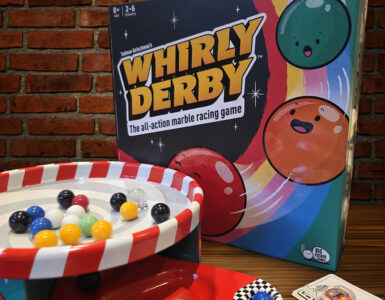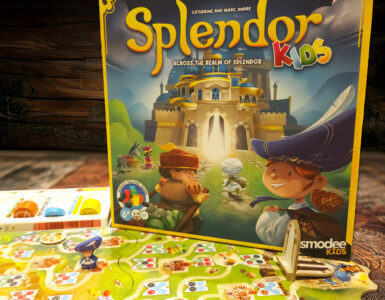Today, we’re going to be looking at Mission Savane, a cute new game from publisher Kiwi Zou. This is the second game we’ll be reviewing, and it involves setting up your mission board by placing numbers 1 to 12 and arranging the Poacher tiles on the grid. You then set up a grid of 12 tiles, with each tile representing a cage with an animal and a colour.
The game is cooperative, and your main goal is to free all of the animals. On your turn, you draw a tile from the very nice thin bag and check if it matches either a colour or an animal. Here’s the first bit of light decision-making, as you need to decide whether it’s better to match the colour or the animal. This adds a nice, light strategic element, but you can discuss it with your fellow players.
If you manage to match both a colour and an animal, you can also put a Poacher tile back in the bag, which is beneficial. Too many Poachers and you lose the game. Poachers appear if you draw one of their tiles out of the bag—this ends your turn and adds to the Poacher total, making it all the more important to try and find perfect matching animals.

To make things a bit more difficult, there is a penalty for placing two animals or cages next to each other. If you do, they make too much noise, and you’ll have to add one of the Poachers from the pile to the bag, increasing the chance that you’ll pull out another Poacher. I really like this, as it adds a bit of thinking about space and planning. Of course, you can choose to ignore that rule if you’re playing with younger kids.
Another feature I really like is the risky mission variant, where you play with the board on the other side. This side has several spaces that impose further restrictions on what you can and can’t place. For example, on space 3, you can’t have an elephant, and on another space, you can’t have a lion, etc.
It’s also worth noting that you can happily play this game solo, which is a nice little addition.
The components are of good quality, as usual with this type of game. I do wish there was an insert or some sort of organisation, but everything fits nicely in the box. It’s nothing a small bag wouldn’t help sort. The cards are great quality, the artwork is lovely, and everything is really well made.

Mission Savane is, I think, a perfect example of how to make a game for young children. It has a really simple concept, but most importantly, it scales really well. You can play it with very few rules, simply matching colours, but you can add more restrictions and challenges to make it harder, meaning that as your kids grow older, you can expand the game with them.
This is the second game from the new publisher Kiwi Zou that I really like, and I’m looking forward to talking to you about their other titles as well. We have a new player in town when it comes to games for very young children, and that’s definitely a good thing.
Disclaimer: “Forest First” was kindly provided by “Hachette Games” for review. Flavien Loisier is the General Manager of Hachette and is an active member of our community. Rob Trounce has also recently joined our group and is Head of Marketing. Our thoughts and opinions are, however, our own.














